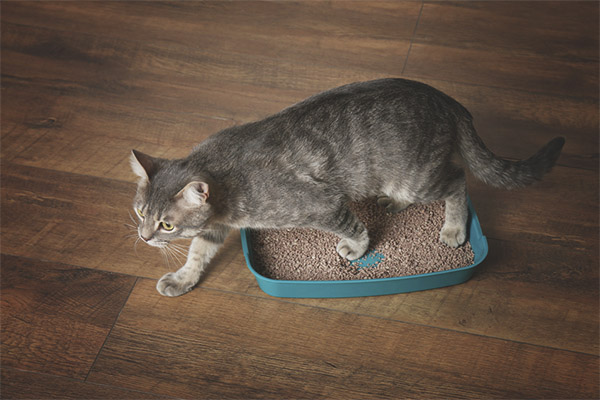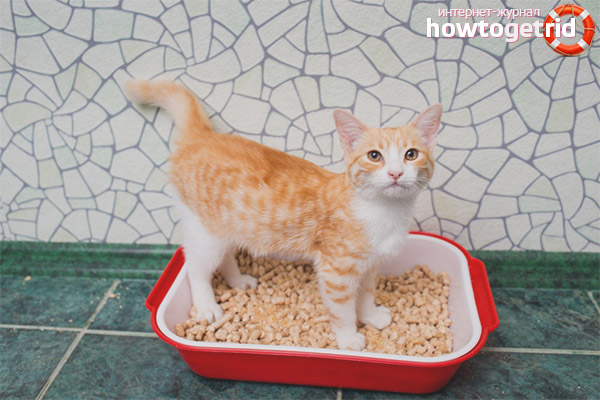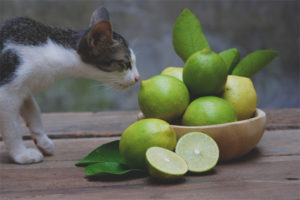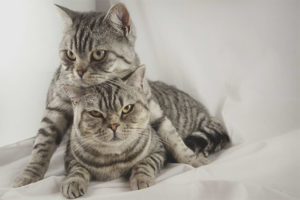The content of the article
Any attentive host who monitors the health of a pet is concerned with the question - how many times a day should he urinate. There are specific regulations for each type of pet, including cats.
When calculating you should pay attention to the individual characteristics of individuals:
- age of the cat;
- its mass;
- on what feeding is located;
- gender identity;
- sterilized cat or not;
- the lifestyle he leads.
Often, if a portion of urine becomes more or less than the established norm, this is a sign of illness. But do not panic. The rate of urine production is the average amount characteristic of most healthy cats. There are many factors that affect the animal’s body, do not signal a problem,and reflecting the characteristic features of health and content.
Peculiarities of urination in kittens
In newborn kittens under the age of 3 months, the urinary system begins to form. During this period, kittens can urinate 1 time per day. This is not a deviation from the norm. As the urinary organs grow older and improve, kittens begin to write more often - 2-3 times a day.
In six months comes the peak activity of the animal. If the kitten looks healthy, moves a lot, plays, and the owner leaves water in the open access, the baby will drink a lot. This means that the number of urge to urinate will increase. At this age, kittens can write up to 6 times a day.
Peculiarities of urination in adult cats
First of all, it is necessary to know that due to the different device of the urinary system, the rates of urination in cats and cats are different. At the age of over 1 year, male individuals pee on average 2 times more often than female individuals. This is facilitated by a number of important circumstances:
- Cats have thinner urinary canals than cats, i.e. they hold less urine.
- In addition, the channels have a more curved shape, and this leads to their incomplete emptying, i.e. actual channel volume decreases. To remove the urine, the cat has to write more often.
- If the cat is castrated, this leads to an even more narrowing of the urethra.
For an adult cat, urination becomes the norm - from 3 to 4 times a day. For a neutered cat - up to 6 times per day.
In this case, cats should walk on the tray on average 1-2 times a day. Although here there are nuances due to female physiology. During pregnancy or during estrus, the amount of urination in a cat increases, which is a variant of the norm.
Urinary dependence on the nature of nutrition
The difference in the power modes of different cats leads to a change in the frequency of visits to the tray. An animal that eats mostly dry food is more thirsty. Next to the feed should leave water in the required quantity. The more fluids a pet consumes, the more often urge to urinate. In such individuals, the owners should monitor not only the amount of urination, but also the quality of the urine itself:
- In the urine should not be impurities.
- The volume of each portion is important, the amount of urine should not be scanty.
- When visiting the tray, the animal should feel calm, not have pain or difficulty urinating.
Observing the behavior of a cat eating dry food is very important. They are more likely to suffer from urolithiasis. Especially the risk increases in the case of cat castration.
It is possible to reduce the risk of developing such diseases if you carefully select premium-class food intended for such animals and provide your pet with enough clean drinking water.
Animals that are fed exclusively dry food require water in the amount of 3 times the volume of food eaten.
The main causes of urination disorders
Relatively safe include:
- Stress due to lifestyle changes (most often it is a move, change of owners, the appearance of another pet, fright).
- Unexpected transition to another type of food (from dry to wet and vice versa).
- Castration, sterilization surgery.
Such changes are hard experienced by animals.They become depressed, irritable. At such moments, there is a disturbance in the functioning of various organs, an appetite is disturbed, the nature of urination changes. But usually this condition goes away independently and does not require the intervention of a veterinarian. Males adapt faster - about 3 days, females longer. Despite the stress, after a few days they all start walking on the tray, as it should be - 2-3 times a day.
Symptoms of the disease
Signs leading to dangerous health effects:
- Complete absence of urination within 2 days, or vice versa too frequent urination, including when the animal does not have time to reach the tray.
- The animal is obviously painful to write or it is difficult (the cat behaves restlessly on the tray, meowing loudly).
- Urine contains blood, sand.
- The animal behaves sluggishly, apathetically.
- Loss of appetite.
- There are signs of the disease (fever, dry hot nose).
In case of detection of one of the listed signs - it is necessary to show the animal to a specialist as soon as possible.
Thus, the average urination rates for cats are as follows: kittens up to six months - from 1 to 3 times a day,From six months this number increases up to 5-6 times, and adult animals go to the tray 1-2 times a day (females) and 3-5 times (males).
Video: how often the kitten goes to the toilet












To send